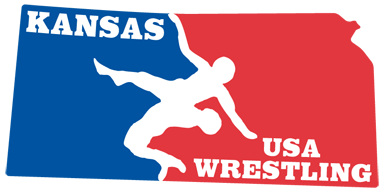Budget Hearing Posted on Mon, Feb. 14, 2005
Hearing to target schools' budget
Officials say they need to be prepared to cut programs because they don't know how much funding the Legislature will approve.
BY JOSH FUNK
The Wichita Eagle
Students in the Wichita district will have fewer elective courses to take and fewer sports to play if the school board goes ahead with large cuts to athletics, fine arts and Junior ROTC.
If the district cuts one-quarter of the athletics budget, the athletic director says he'll have to reduce the number of sports offered .
If the district cuts one-quarter of the fine arts budget, instrumental and vocal music, theater and visual arts programs would all suffer.
If the district cuts half of Junior ROTC's budget, Col. Bob Hester said that would almost kill the program.
Those three cuts would free nearly $1.5 million in the district budget, but they'd also diminish several of the programs that make school enjoyable.
"First and foremost, we're hopeful it will never happen," athletic director Bill Faflick said. All three departments that face cuts -- like schools throughout districts --
are encouraging parents to call or write their state lawmakers to share their concerns . The programs serve 20,120 students.
The board set aside two hours of its meeting tonight to hear all the reasons why it shouldn't make such drastic cuts.
School board president Lynn Rogers said the district is considering the cuts because there's no way to know how much, if any, additional money the Legislature might approve.
"Until we actually see the money, we don't know what we're going to get," Rogers said. "And because we're such a big district and we want public input, we've got to start early."
Without any new funding, the district expects its costs to exceed its income next year by about $9 million because salaries, health insurance and utilities will all likely cost more.
If the current funding scheme remains unchanged, the district's $446.9 million total budget would likely still increase next year because of expected increases in the number of low-income, bilingual and special education students, but officials expect cost increases to exceed any funding increases by about $9 million.
In January, the Kansas Supreme Court ordered lawmakers to increase school funding by April 12. Two different school funding packages were proposed last week.
But it's not clear whether either has enough support to pass, and school board members say they're not confident the Legislature will deliver more money next year.
Beyond the cuts to be discussed tonight, school principals will ask parents and staff members for advice about what could be cut at each building. Nonschool departments will build their own lists.
As painful as the cuts to athletics, fine arts and Junior ROTC would be, they would reduce the amount schools would have to cut.
Faflick said cutting 25 percent of his $1.5 million athletics budget would require some combination of eliminating entire sports or grade levels of sports. About 6,300 students participate.
Most of the athletics budget goes to pay coaches' supplemental salaries.
The district's fine arts department includes instrumental and vocal music, theater and visual arts classes, director Dan Stiffler said. About 11,500 students participate.
Stiffler said if he has to make this cut, fine arts programs would lose 11 or 12 teachers.
The cut would be spread throughout all the programs Stiffler oversees. No programs are in jeopardy of being eliminated.
But all would be diminished, and students would have fewer choices in electives.
"I'm absolutely determined that we will continue to have a strong instrumental music program in this district," Stiffler said.
The district already regularly turns students away from its visual arts classes, he said, so further cuts would make it tougher for students to get the drawing or ceramics class they want.
Col. Bob Hester said cutting the $1.1 million budget for Junior ROTC doesn't make sense because of the great things the program does for kids, and because JROTC is a bargain.
"Our goal is to make kids better citizens and better students," Hester said.
About 2,300 students participate in the middle school and high school programs.
The program is a good deal because the district receives about $600,000 a year from the U.S. Department of Defense to support the high school program, Hester said, and many instructors work without benefits.
"Our instructors cost about the same as a custodial aide (to the district)," he said.
The middle school students pay a $7 fee to participate, and Hester uses that to buy supplies and uniforms at surplus stores.
"I know that it helps kids," he said. "It's good for kids."







